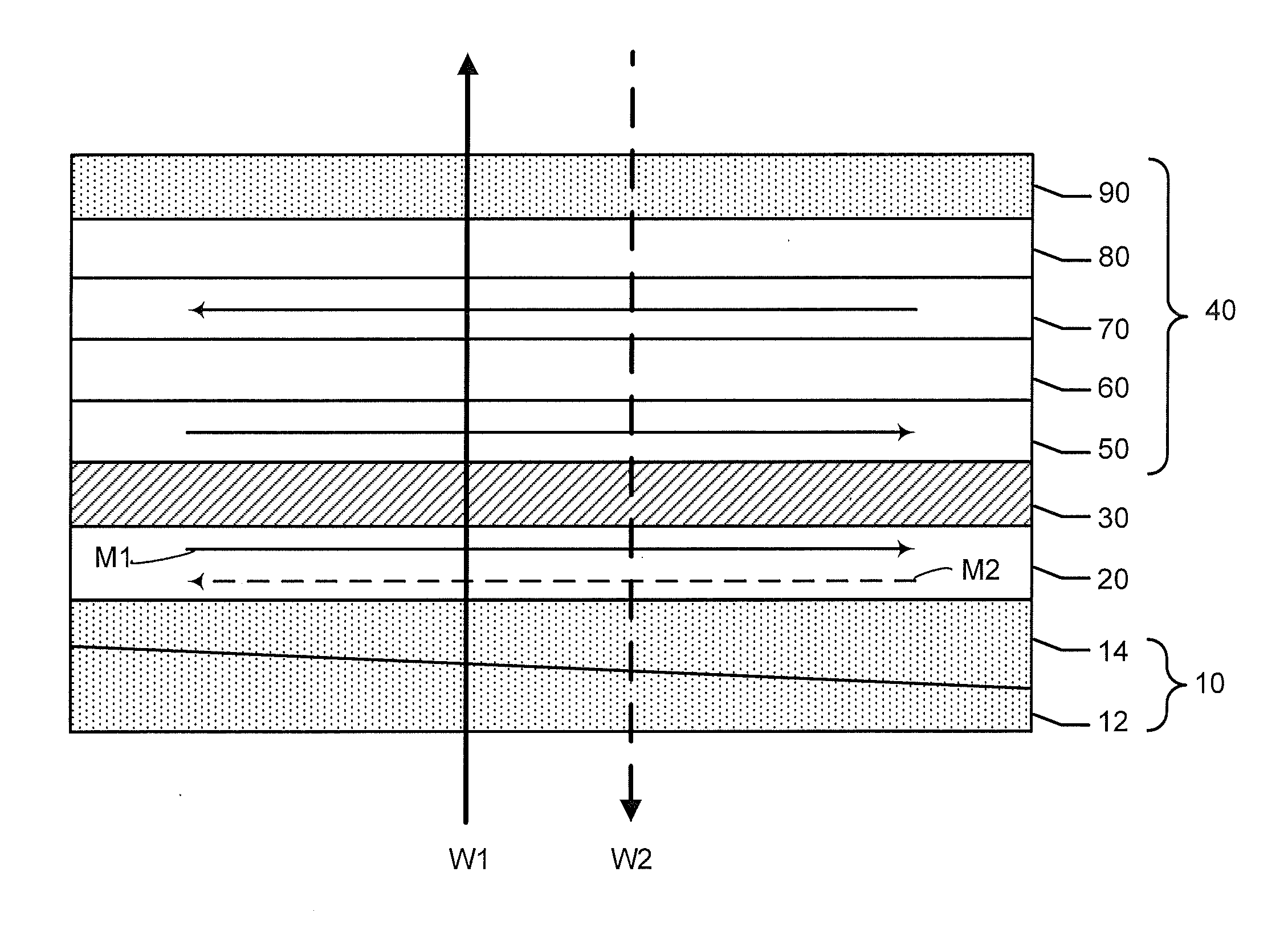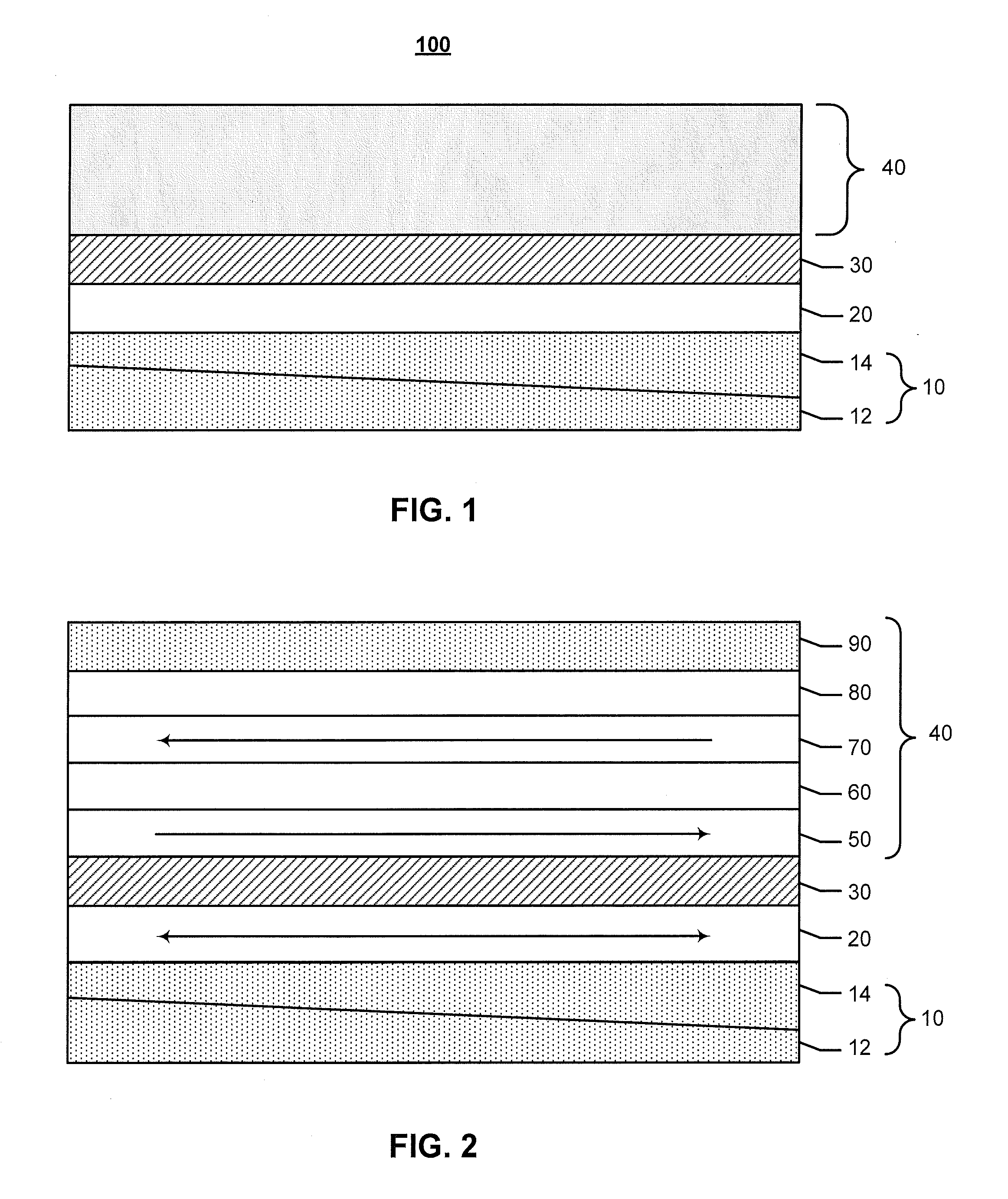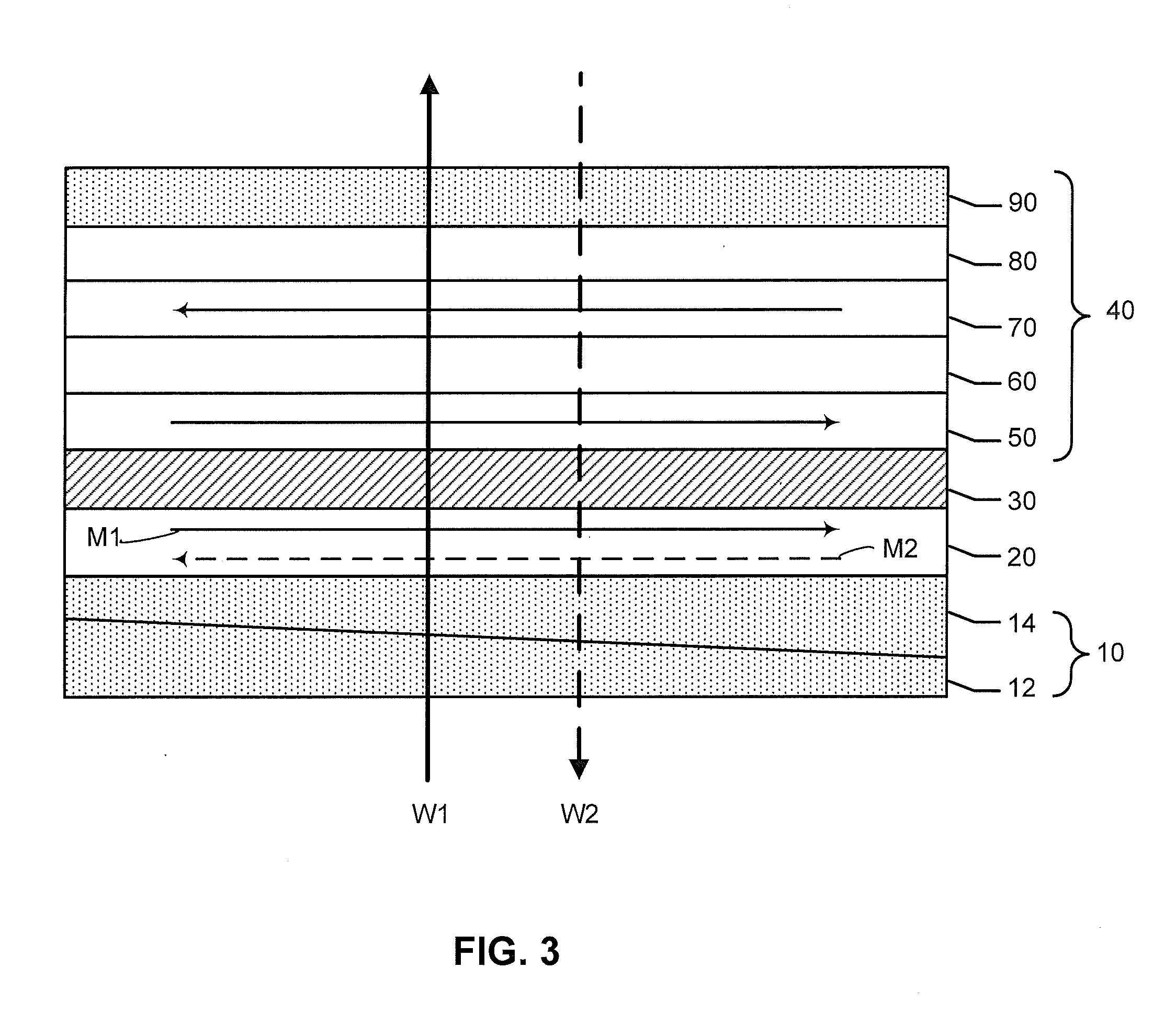Magnetic tunnel junction devices having magnetic layers formed on composite, obliquely deposited seed layers
a tunnel junction and composite technology, applied in semiconductor devices, digital storage, instruments, etc., can solve the problems of inability to reduce values, inability to make tunnel barriers too thin, and inability to reduce write current, etc., to achieve the effect of increasing the in-plane magnetic anisotropy hk
- Summary
- Abstract
- Description
- Claims
- Application Information
AI Technical Summary
Benefits of technology
Problems solved by technology
Method used
Image
Examples
Embodiment Construction
[0021]Preferred embodiments of the invention will now be described in further detail with reference to semiconductor stack structures and magnetic tunnel junction (MTJ) structures that are constructed having a magnetic free layer formed on composite, obliquely deposited seed layers, which results in increased in-plane magnetic anisotropy of the magnetic free layer.
[0022]It has been previously reported that a large in-plane anisotropy can be induced in a magnetic free layer in a stack structure formed by obliquely depositing a seed layer of Ru (ruthenium) at a large incidence angle of 60 degrees (angle between the incident beam and the surface normal of the substrate), followed by depositing magnetic material consisting of Fe90Co10 or Fe10Co90, and followed by depositing a Ru cap layer. See Z. Lu, et al. “Magnetic Anisotropy of FeCo Films induced by Obliquely Sputtered Ru Underlayers,” IEEE Trans. Mag. 45, 4008 (2009). In practice, construction of this magnetic stack structure is not...
PUM
 Login to View More
Login to View More Abstract
Description
Claims
Application Information
 Login to View More
Login to View More - R&D
- Intellectual Property
- Life Sciences
- Materials
- Tech Scout
- Unparalleled Data Quality
- Higher Quality Content
- 60% Fewer Hallucinations
Browse by: Latest US Patents, China's latest patents, Technical Efficacy Thesaurus, Application Domain, Technology Topic, Popular Technical Reports.
© 2025 PatSnap. All rights reserved.Legal|Privacy policy|Modern Slavery Act Transparency Statement|Sitemap|About US| Contact US: help@patsnap.com



